Five years on from the first iteration, the Tracer gets a new name, a new look and a whole swag of gadgets. We climb onboard the new Yamaha Tracer 9 GT for a spin
When the Yamaha Tracer hit the market, it brought substantial bang for the buck and it took on bikes it probably didn’t have the right to. That certainly hasn’t changed. It has had a couple of name changes since 2019; it started as the Tracer 900, went all minimalist to just Tracer and now it’s settled somewhere in the middle as the Tracer 9. Once available in two models, the standard and the GT, it’s now just the panniered-up Yamaha Tracer 9 GT.
The Tracer 9 GT has been gifted some lean-angle sensitive electronics (see sidebar) from the flagship superbike’s parts bin, as well as electronically controlled semi-active suspension. In one significant update, it’s gone from a middle of the road midsized tourer, to a tech-savvy sports-tourer. It celebrates with a sleek modern look for the 2021 model year, too, with styling cues from the brand’s YZF-R1M and YZF-R6 sportsbikes. Available in two colours, Tech Kamo, which is black on black, and Icon Performance, which is silver, black and blue like the R1-M. I’m a fan of the Yamaha blue wheels and silver mid-section; it’s a great looking machine.
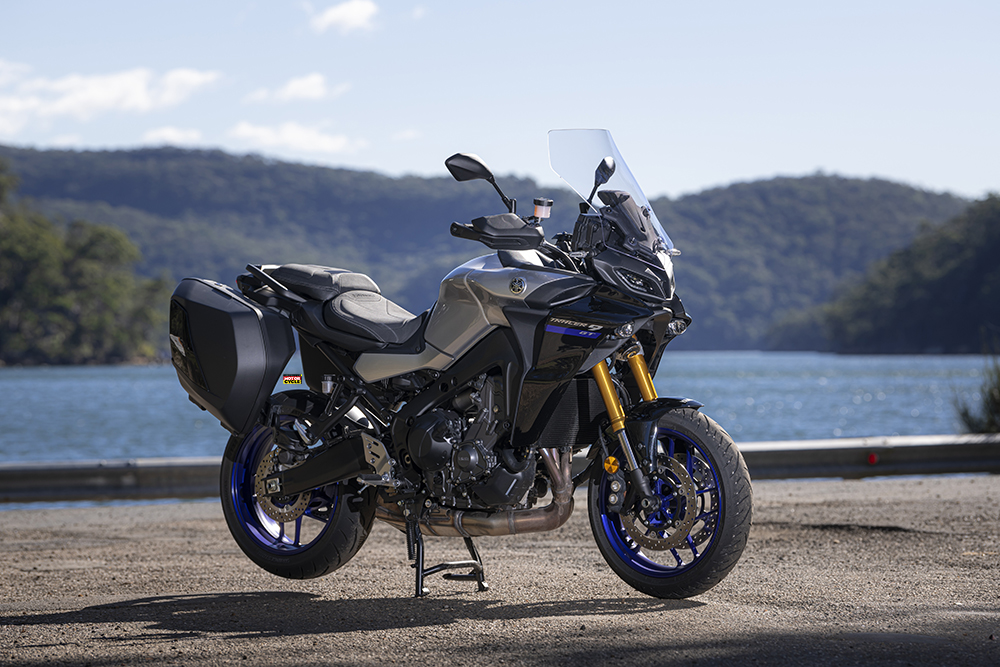
The lower set of LEDs do the high- and low-beam duties, while the upper set are LED running lights with lean sensitive cornering lights dominated by the large adjustable windscreen. The moulded handguards keep the cold winter air off your hands and airflow is drafted around the rider’s knees through the MotoGP-esque aero with internal winglets. The stylish and functional hard pannier bags complete the sleek and functional look.
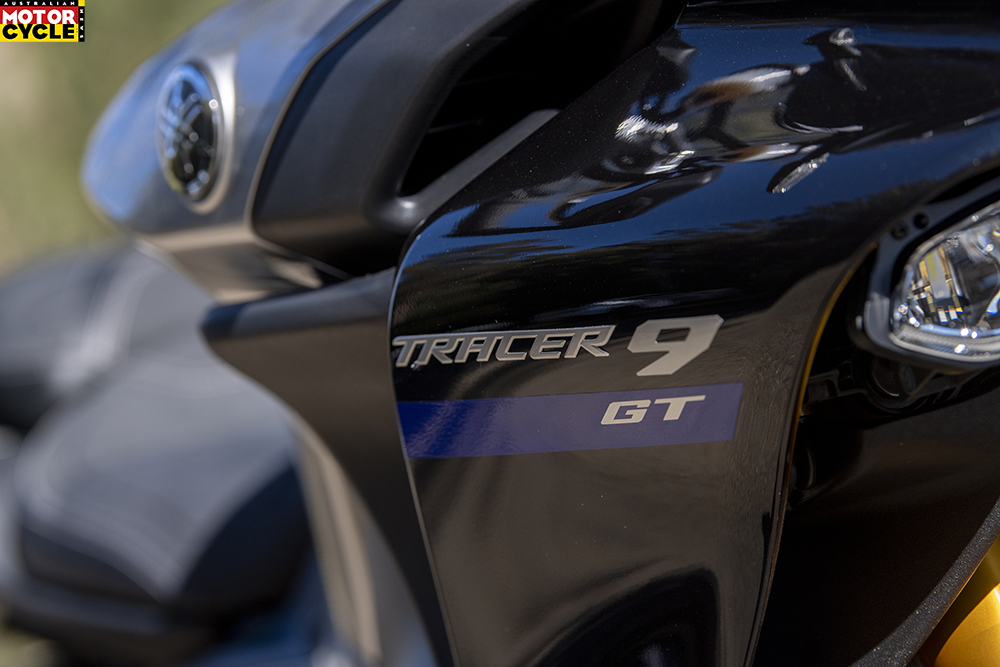
Those who have experienced any bike from the MT-09 range know what a solid platform it is. Light and torquey, anything rocking that CP3 engine is agile and a barrel of fun. The MT-09 chassis is an excellent platform for the Tracer especially with the new upgraded semi-active suspension and a 60mm longer swingarm over the MT-09 for more stability.
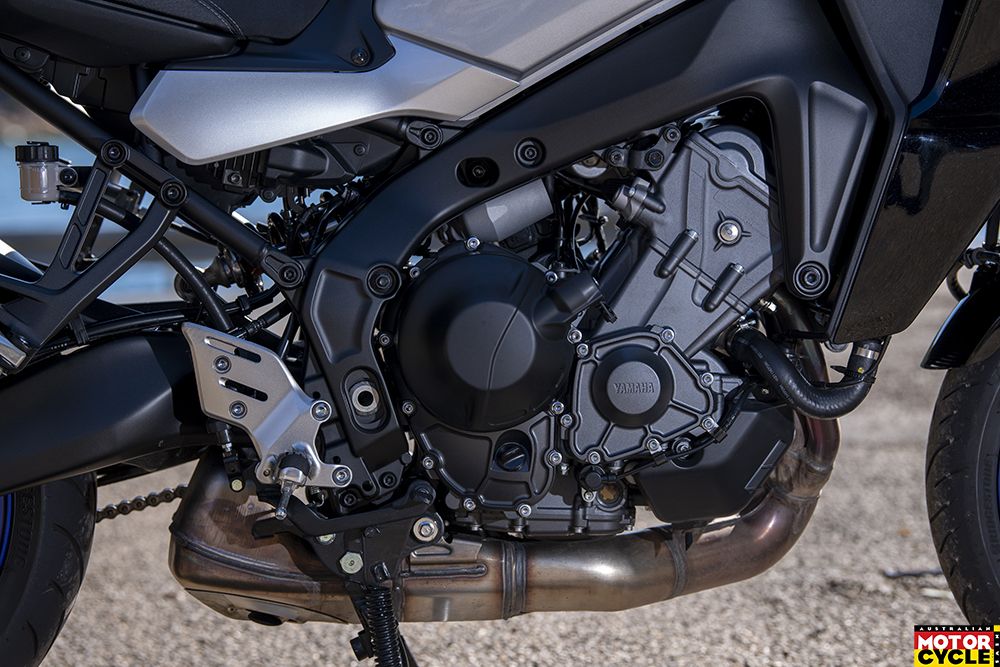
The crossplane crank inline three cylinder mill has always been a peach and now it is an even riper one with the new updates. As with all its MT-09 siblings, the Tracer 9’s engine has had a complete redesign with 3mm larger bore and it now measures up at 889cc. The engine is 1.7kg lighter, more powerful and more fuel-efficient. And the exhaust note sounds too good to be true.
To meet Euro-5 emissions targets, efficiency had to be improved and the result is seven percent more power to 89kW (119hp) and increased torque that chimes in lower in the rev range at 7000rpm, making the Tracer surprisingly swift.
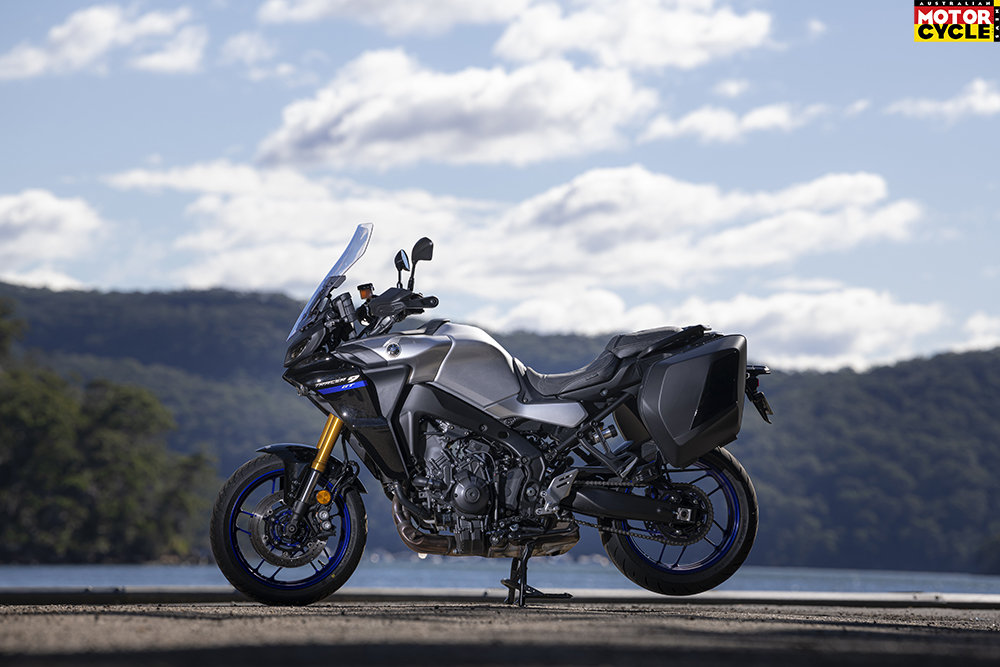
It’s not ‘rip your arms off fast’ but there is plenty of power, more than enough. Ripping through the revs and banging gears with the quick shifter gets the digital speedo rising rapidly. And it will loft the front wheel in the first two gears without effort. Well, until the LIF (front-wheel lift control) gives you a gentle hand at bringing it back down, anyway. Power delivery is adjustable via four switchable modes, Mode 1 is the most aggressive down to Mode 4, which reduces power for slippery conditions.

Another side-effect of Euro-5 certification is a funky exhaust system, and it took me a couple of laps of the bike in the garage to actually work out where the noise comes from. The chamber-style exhaust houses the catalytic converter and is all tucked in neatly below the engine to keep the mass centralised, saving 1.4kg over the previous model’s exhaust in the process. Surprisingly, it still sings an enthusiastic tune, but most of the sound is induction noise. And it’s very addictive.

With the extra power, the brakes also get an upgrade. The front master cylinder is now a radial-mounted unit as found on the firm’s YZF-R1. This gives increased braking power and more linear feel from the lever.
The brakes, which were probably on an R1 just a few years ago, are excellent; only one finger required. Helping with the braking and handling are new lightweight wheels. Some 700g lighter than the previous Tracer, which means less unsprung weight to slow down and change direction.
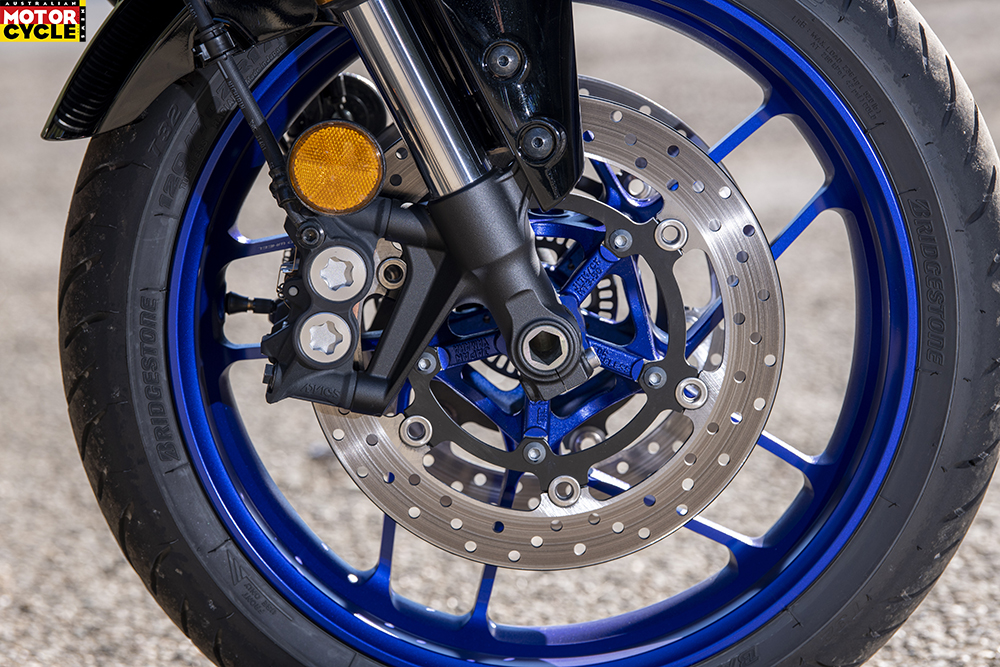
Out on the road, the Tracer has characteristics more akin to a naked sportsbike than a full-on tourer. It is quite comfy with a wide ’bar and an upright seating position. Wind protection is good from the large windscreen (I am about 175cm tall) and you still look over the top of it rather than through it. I prefer it in the lower setting to keep enough fresh air going through my helmet to prevent fogging.

The cockpit is set out nicely, with two full-colour TFT screens taking up residence. The left one is the primary screen with a bar-type tacho that changes colour as the revs rise. Speed, gear position, mode, suspension setting, traction control mode, heated-grip setting and brake-control setting all beamed at you from the left. The right-hand screen is split into four quarters which are customisable for things like fuel level, odometer, cruise control, trip meters, fuel consumption, air and water temps, and plenty more.
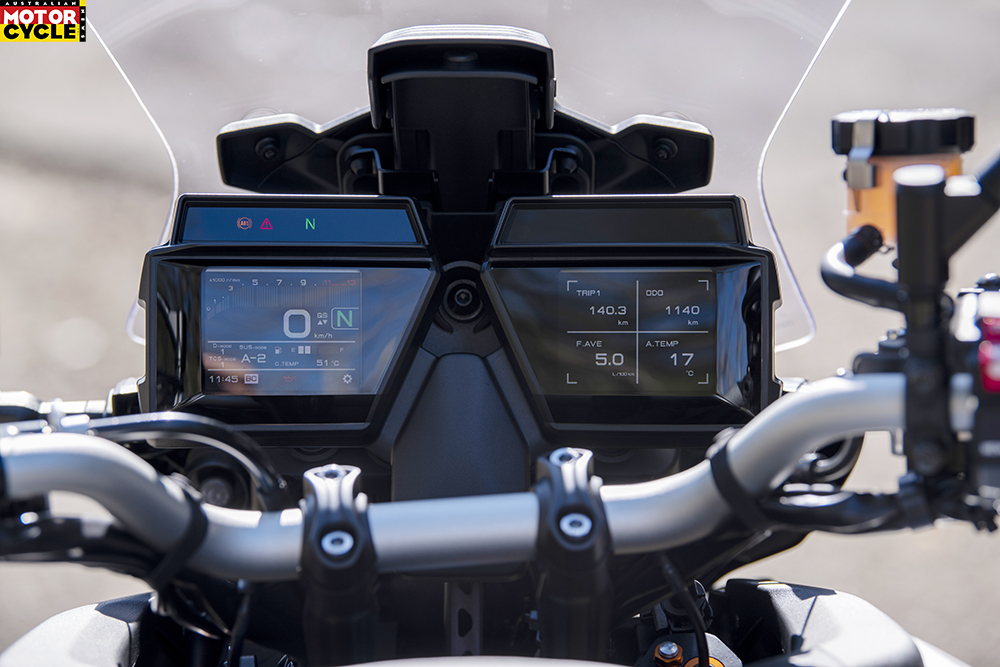
The traction, suspension, throttle modes and cruise control are all controlled from the left-hand switchblock, while the rest are operated by a thumb wheel on the right-hand switchblock. I find it quite simple and you can scroll through things while riding. The brake lever is span adjustable but the clutch is not. The clutch friction point is right at the end of the lever travel, so if your hands are small, you will be looking for some adjustment.
Heated grips are fitted as standard, with 10 levels of warmth, though I didn’t dare try anything over eight – 10 would be hotter than the sun, I reckon.

It doesn’t feel at all like a touring bike when you are riding solo and I almost forget about the pannier bags protruding from the sides when going to lane split. But they’re easy to remove if you’re doing regular commuting.

Yamaha boasts 350km+ range from the 19L fuel tank, and I measured the fuel consumption at 4.5L/100km during my time on the bike, so 350km is easily achievable. But covering those distances, comfort is a must. There are lots of adjustments than can be made to customise ergonomics. The handlebar mounts can be moved forwards and upwards, the rider’s footpegs can be lifted by 15mm and the rider’s seat has two height options.
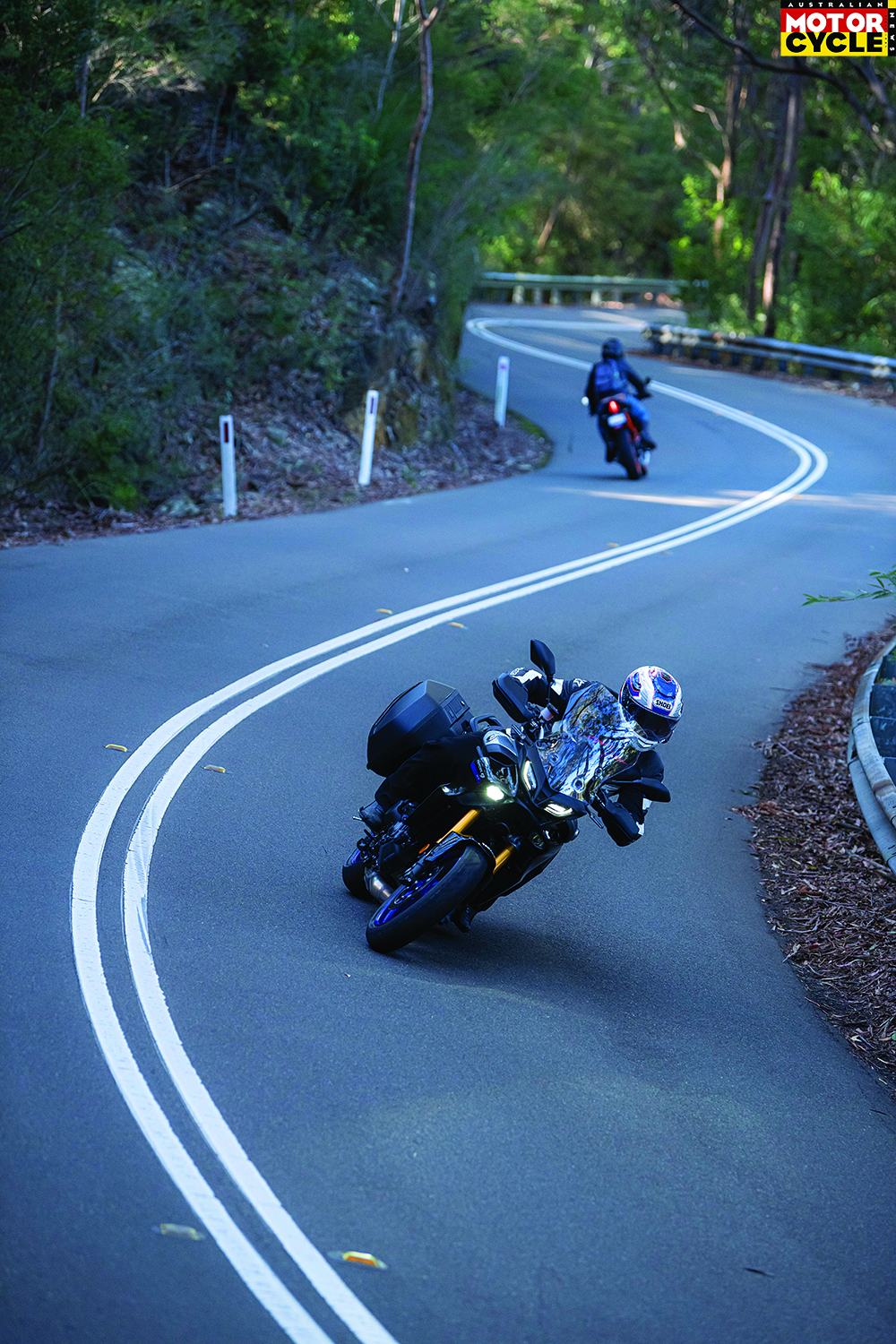
Our test bike was fitted with the optional comfort seat and, just as the label suggests – comfortable! There isn’t much wiggle room backwards and forwards on the rider’s seat,
but I don’t find this to be an issue as the seat is very good.
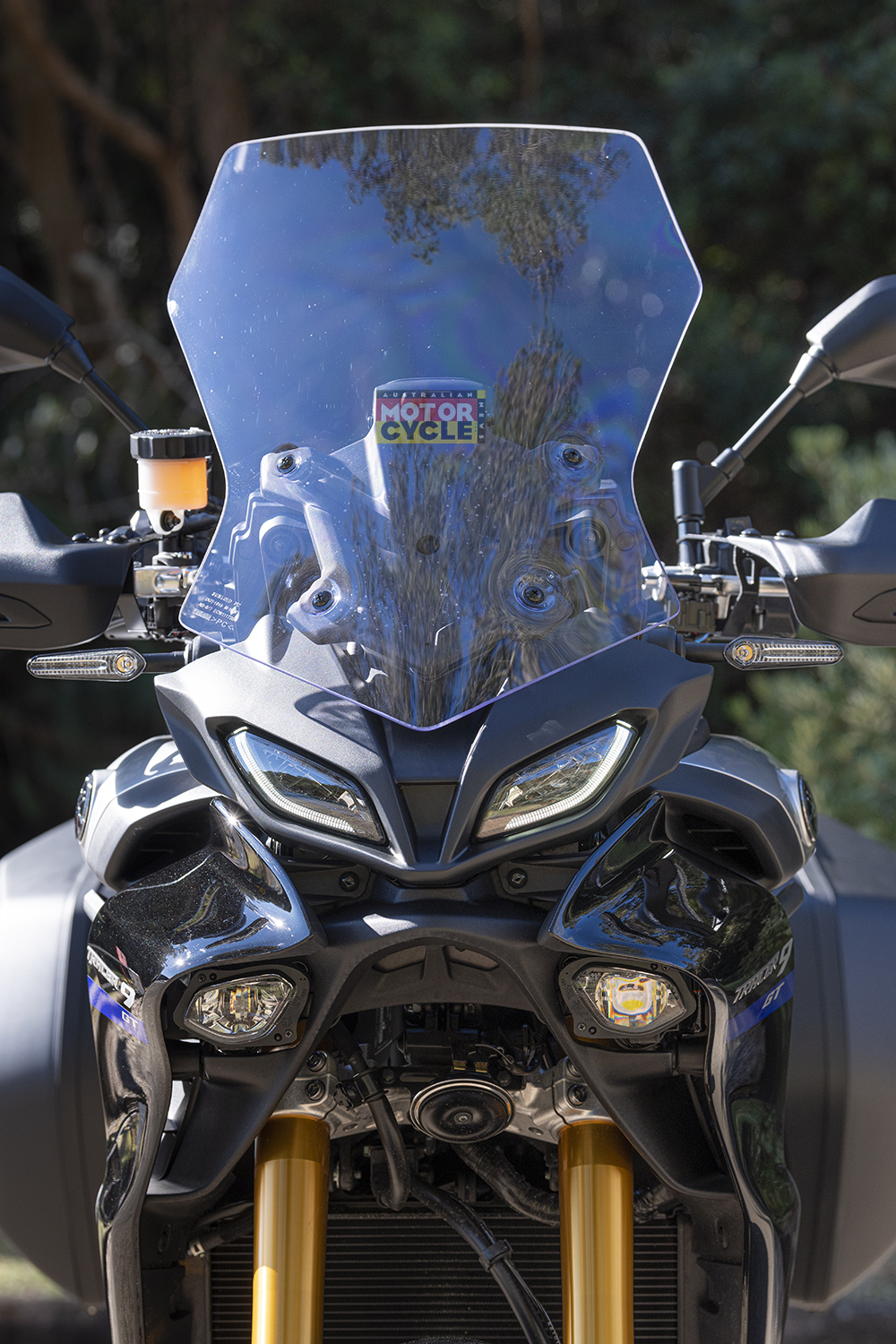
Your pillion would probably have trouble faulting the rear seat, too. It’s wide, flat and grippy so they won’t slide off the back while you are fanging it in the mountains. There is a decent grab rail for them to hold on to as well. The rear shock preload is manually adjustable without tools, so you can wind a few clicks on when your bags are loaded with loot or you are carrying a pillion.
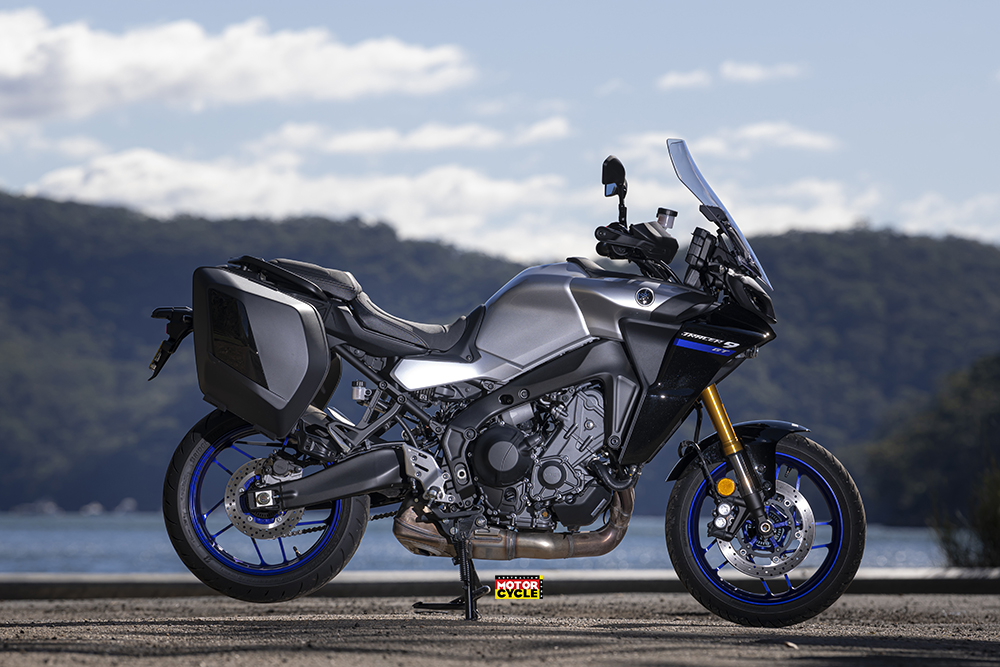
The KYB semi-active suspension is a pleasure to ride on. There are two settings available on the fly. A1 is the sportiest, and in this setting, the front and rear damping is taut so it feels very sporty and gives you more precise feeling from the front-end. It feels great in the right conditions but is not best suited to choppy second-rate roads. But a quick flick of the mode selector on the left-hand switchblock gets you into A2 mode. This is much more suitable to sketchy back roads and boring highways. I preferred the softer setting for the bulk of my rides, clicking it up to A1 when having a bit of a go on some well-maintained twisties.
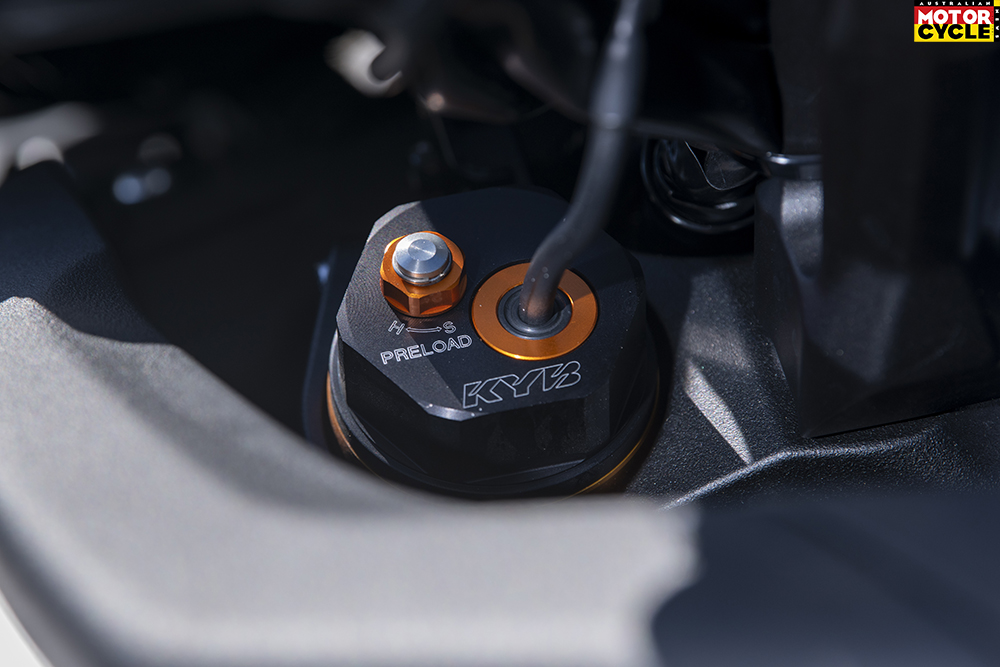
The brains of the bike, a Yamaha six-axis IMU (inertial measurement unit) developed from the R1 is the hero of the Tracer 9. So you know that it is more than capable to save your bacon on the open road. The IMU and ECU control the cornering traction control system, slide control, front wheel lift control, suspension control unit and the cornering ABS. The IMU is constantly monitoring the bike’s behaviour so it’s ready to intervene before you even know you need it. The best rider aids are ones you don’t even know are doing their job. Besides traction control interfering with my wheelies, some heavy throttle application on wet roads and ABS cutting in from some spirited use of the rear brake, I never felt it get in the way of my riding. And if you so desire, they can all be turned off.
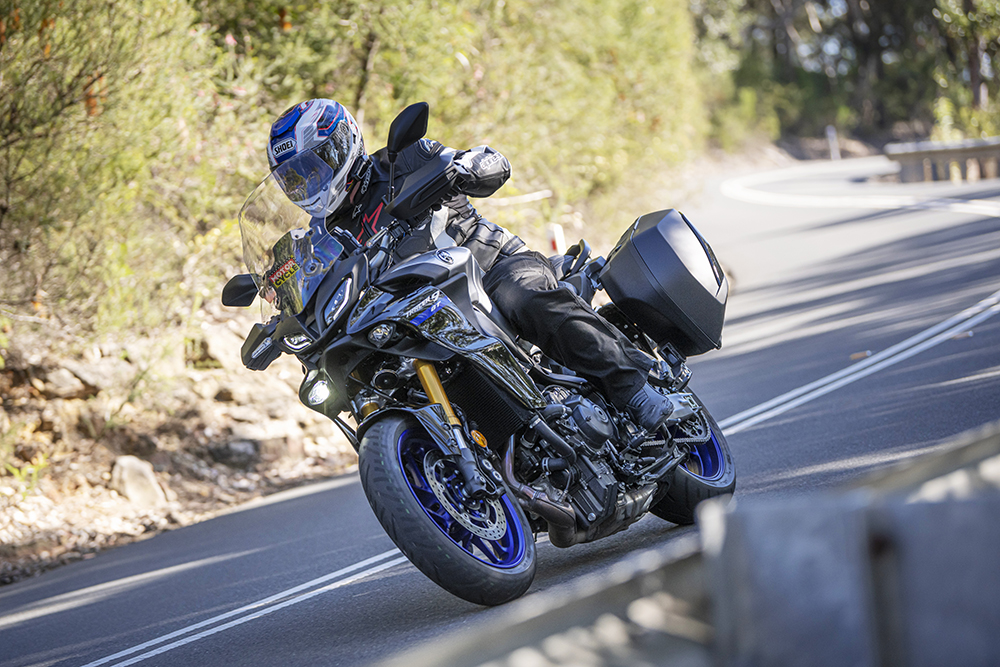
Maintenance-wise, the Tracer 9 comes standard with a centrestand which is worth its weight in gold for simple tasks like chain cleaning and lubing and general bike washing. As for servicing, the first service is at 1000km and then every 10,000km after that. A major service is due every 40,000km which is pretty standard so there are no surprises lurking there.
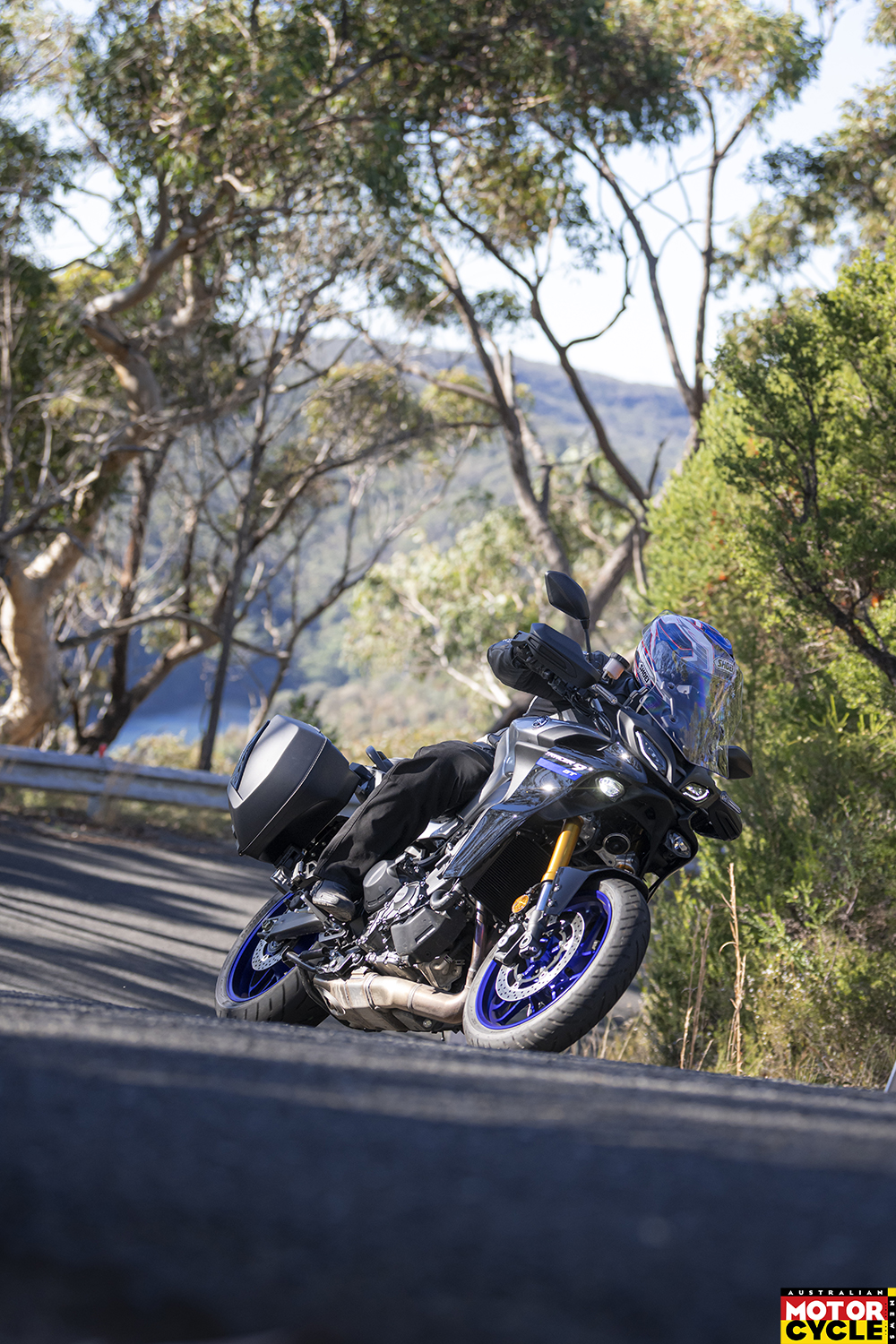
I really enjoyed the Tracer 9 GT. It is a bit of a weapon but still ultra-practical. Out of all the MT series roadbikes, it is the pick of the bunch for me. Its ability to be a commuting workhorse during the week, a back-road scratcher on the weekends and a tourer on occasion ticks a lot of boxes for one motorcycle. The only box it doesn’t tick is off road. Tenere 9, anyone?

Words David Watt Photography INCITE IMAGES